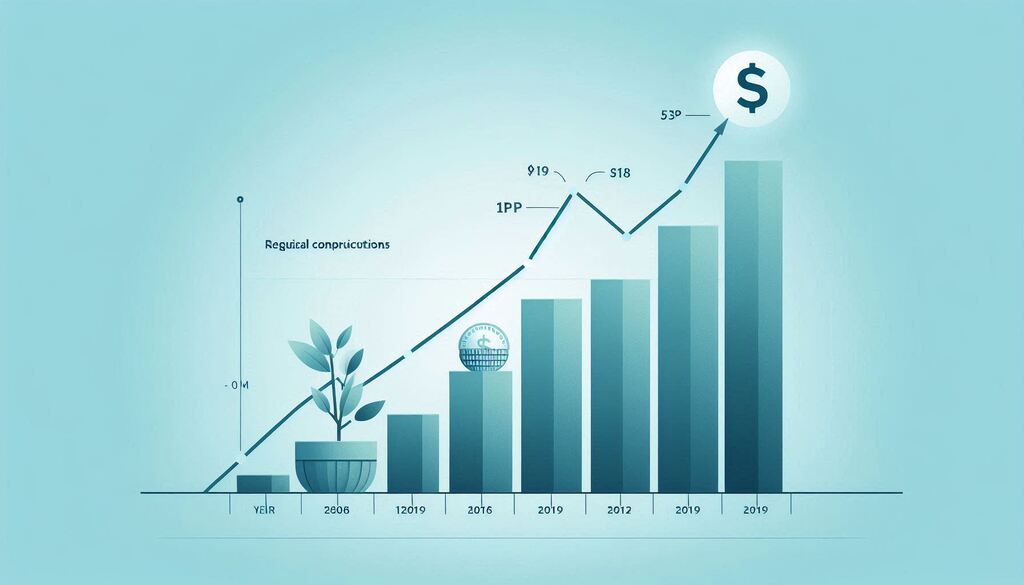In the world of investment, the choice of strategy can significantly impact your financial goals and outcomes. This article will delve into SIP,SWP, & STP comparing their pros and cons, and providing guidance on choosing the right strategy for your needs.
1. Systematic Investment Plan (SIP)
What is SIP?
A Systematic Investment Plan (SIP) is a disciplined approach to investing, where an investor contributes a fixed amount of money at regular intervals—monthly, quarterly, or annually—into a mutual fund scheme. The primary objective of SIP is to accumulate wealth over time through consistent investment, leveraging the power of compounding and rupee cost averaging.

How SIP Works
- Regular Investments: Investors commit to investing a fixed sum regularly.
- Rupee Cost Averaging: Investing regularly helps to average out the cost of units purchased, potentially reducing the impact of market volatility.
- Compounding: Over time, the investments generate returns, and the returns themselves generate additional returns.
Advantages of SIP
- Discipline and Regularity: Encourages disciplined savings and investment.
- Cost Averaging: Helps to reduce the impact of market fluctuations through rupee cost averaging.
- Affordability: Investors can start with a small amount, making it accessible for everyone.
- Compounding: Potential for significant wealth accumulation over the long term due to compounding.
Disadvantages of SIP
- Market Risk: Exposure to market fluctuations can impact the returns.
- Lock-in Periods: Some SIPs come with lock-in periods, which might restrict liquidity.
2. Systematic Withdrawal Plan (SWP)
What is SWP?
A Systematic Withdrawal Plan (SWP) is a strategy where an investor systematically withdraws a fixed amount from their mutual fund or investment account at regular intervals. This approach is often used by retirees or individuals needing a steady stream of income from their investments.

How SWP Works
- Regular Withdrawals: Investors specify the amount and frequency of withdrawals.
- Income Generation: Provides a predictable source of income.
- Capital Preservation: The remaining balance continues to grow or be invested according to the plan.
Advantages of SWP
- Predictable Income: Provides a regular and predictable source of income.
- Flexibility: Allows for customization of withdrawal amounts and intervals.
- Tax Efficiency: Withdrawals may be structured to minimize tax impact.
Disadvantages of SWP
- Depletion Risk: Over time, the principal may be depleted if withdrawals exceed returns.
- Market Risk: The value of the investment may decrease if the market performs poorly.
3. Systematic Transfer Plan (STP)
What is STP?
A Systematic Transfer Plan (STP) involves systematically transferring a fixed amount from one mutual fund or investment to another at regular intervals. This strategy is often used to manage risk, take advantage of different market conditions, or gradually move investments from a high-risk to a low-risk fund.

How STP Works
- Regular Transfers: Investors transfer a fixed amount from one fund to another.
- Risk Management: Helps in managing investment risk by shifting assets gradually.
- Market Timing: Allows for strategic asset allocation based on market conditions.
Advantages of STP
- Risk Management: Facilitates gradual reallocation of assets, reducing market risk.
- Flexibility: Allows for strategic adjustments based on market conditions.
- Diversification: Helps in diversifying investments over time.
Disadvantages of STP
- Complexity: Requires careful planning and monitoring to ensure effectiveness.
- Transaction Costs: Frequent transfers might incur transaction fees.
Comparative Analysis
A comparative analysis of Systematic Investment Plans (SIP), Systematic Withdrawal Plans (SWP), and Systematic Transfer Plans (STP)
| Feature | Systematic Investment Plan (SIP) | Systematic Withdrawal Plan (SWP) | Systematic Transfer Plan (STP) |
|---|---|---|---|
| Purpose | To build wealth over time through regular investments. | To provide a regular income stream from investments. | To gradually transfer funds between different investments. |
| Typical Users | Long-term investors, such as those saving for retirement or education. | Retirees or individuals needing a steady income. | Investors seeking to manage risk or adjust asset allocation. |
| Investment Frequency | Fixed amount at regular intervals (e.g., monthly). | Fixed amount at regular intervals (e.g., monthly). | Fixed amount at regular intervals (e.g., monthly). |
| Withdrawal Frequency | Not applicable. | Regularly scheduled withdrawals (e.g., monthly, quarterly). | Not applicable. |
| Initial Investment Amount | Can start with a small amount, making it accessible for many. | Typically requires a larger initial investment to sustain regular withdrawals. | Usually requires a larger initial investment to be effective. |
| Risk Management | Exposed to market risk; benefits from rupee cost averaging. | Exposed to market risk; withdrawals may deplete principal if market performs poorly. | Gradual risk management through periodic transfers between funds. |
| Liquidity | Generally low due to potential lock-in periods. | High liquidity; provides a steady cash flow. | Moderate liquidity; involves periodic fund transfers. |
| Returns | Depends on market performance and compounding effect. | Depends on market performance; income generated may vary. | Depends on the performance of transferred funds. |
| Tax Implications | Tax benefits on long-term capital gains (varies by jurisdiction). | Withdrawals may be subject to capital gains tax. | Tax implications depend on the funds being transferred. |
| Flexibility | Fixed investment amount, but can usually be adjusted. | Flexible withdrawal amounts and intervals, but may impact principal. | Flexible transfer amounts and intervals, but may incur transaction fees. |
| Compounding | Benefits from compounding of returns over time. | No compounding benefit; focus on steady income. | No direct compounding; focuses on asset allocation adjustments. |
| Transaction Costs | Minimal transaction costs. | May incur withdrawal fees depending on the fund. | Possible transaction fees for fund transfers. |
Conclusion
SIP, SWP, and STP are powerful tools in investment management, each serving distinct purposes.
SIPs are excellent for long-term wealth building through disciplined investing. SWPs provide a structured way to withdraw funds, ideal for those in need of regular income. STPs offer a strategic approach to asset allocation, helping manage risk and take advantage of market conditions.
By understanding the features, benefits, and limitations of each plan, you can make informed decisions that align with your financial goals and investment strategy.
Whether you are just starting your investment journey or looking to optimize your existing portfolio, these plans offer valuable options to enhance your financial well-being.

As soon as I detected this site I went on reddit to share some of the love with them.
Hi, I do believe this is a great website. I stumbledupon it 😉 I
will return once again since i have bookmarked it. Money and freedom is the best way to change, may you be rich and continue to help others.
Review my web blog … nordvpn coupons inspiresensation (t.co)
Thanks for any other great post. Where else could
anyone get that type of information in such an ideal method of
writing? I’ve a presentation next week, and I
am at the search for such information.
Also visit my web blog … nordvpn coupons inspiresensation
I do not know if it’s just me or if everyone else experiencing issues with
your website. It appears as if some of the written text
on your posts are running off the screen. Can someone else please comment and let me know if
this is happening to them as well? This may be a problem with my web browser
because I’ve had this happen previously. Appreciate it
my website: nordvpn coupons inspiresensation
I do not even know how I ended up here, but I thought this
post was great. I do not know who you are but certainly
you are going to a famous blogger if you are not already
😉 Cheers!
My web-site nordvpn coupons inspiresensation
Nordvpn Code 350fairfax
Excellent way of explaining, and nice paragraph to take data concerning my presentation subject, which i am going to present in college.
You are my aspiration, I own few blogs and very sporadically run out from brand :). “Truth springs from argument amongst friends.” by David Hume.
I’d have to check with you here. Which is not one thing I normally do! I take pleasure in reading a put up that will make people think. Additionally, thanks for allowing me to comment!
Hello! Do you use Twitter? I’d like to follow you if that would be okay. I’m definitely enjoying your blog and look forward to new posts.
Thanks for sharing superb informations. Your site is so cool. I’m impressed by the details that you have on this site. It reveals how nicely you understand this subject. Bookmarked this website page, will come back for extra articles. You, my friend, ROCK! I found simply the info I already searched all over the place and just could not come across. What an ideal web-site.
What’s up it’s me, I am also visiting this web site on a regular basis, this site is really pleasant and the visitors
are truly sharing fastidious thoughts.
Review my page :: eharmony special coupon code 2025